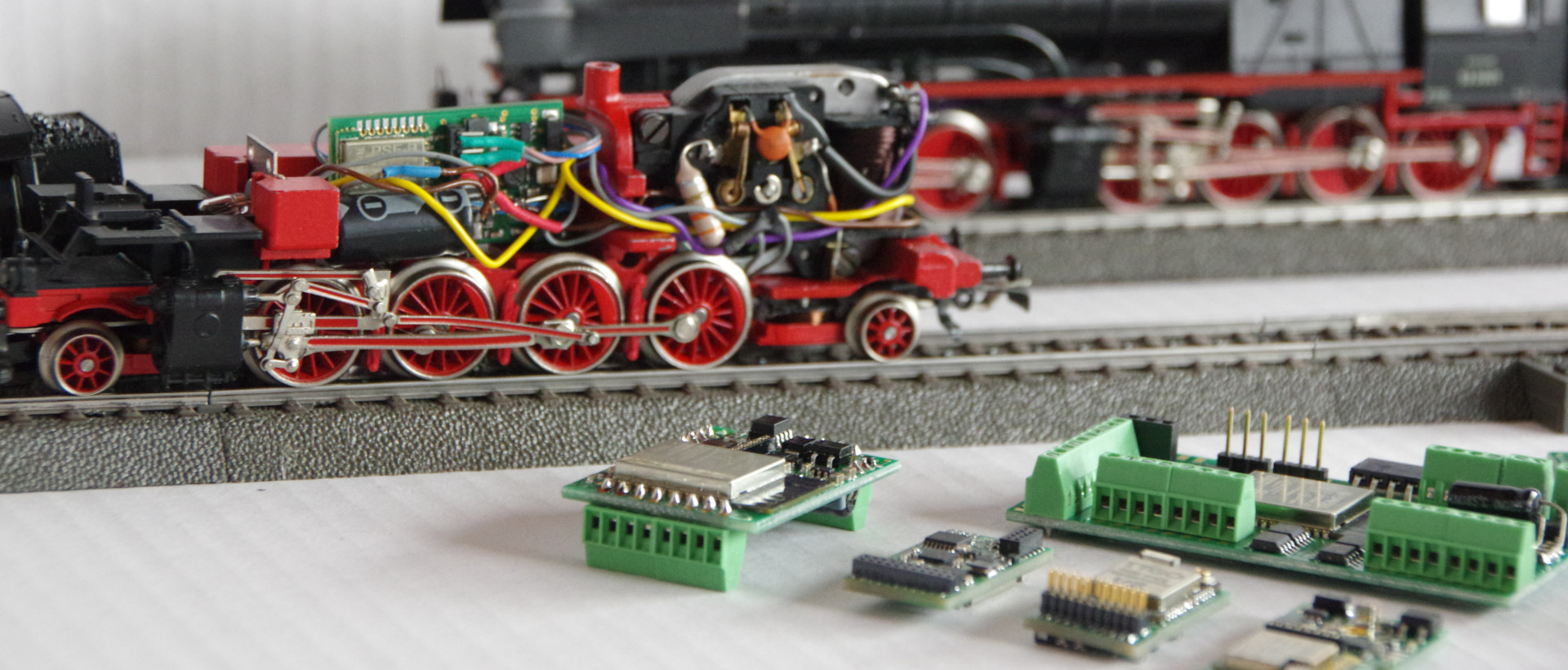
“Digital” – but without a central control unit
CTC reinvents digital model railways from the ground up. Instead of communicating via the track, CTC uses Wi-Fi technology, which is available in nearly every household. The track only carries power. This can be supplied by an old analog transformer, a simple switching power supply, or even a digital control unit.
CTC does not require a central electronic unit (digital control unit), nor does it need boosters, braking modules, or sensor buses. All you need is Wi-Fi, the free CTC app, and CTC modules in locomotives and turnouts.
Train Protection Just Like the Real Railway
For those who want more than just driving and switching, CTC offers a system for train protection and automation based on the ETCS standard used by full-size railways—using balises.

A balise in the track informs the locomotive of its current position and what lies ahead—for example, a red signal at a distance of 80 cm. In the case of a red signal, the locomotive reliably comes to a stop, not only in automatic mode but also during manual control.
For garden railways, we use NFC tags as balises, while for smaller gauges, infrared transmitters are embedded in the track. Of course, the locomotives must be equipped with a compatible receiver for this system.
A New Era of Model Railway Control Has Begun
In the hundreds of conversations we have at trade fairs, no one disputes anymore that the future of model railway control will look like CTC. And with the shift to Wi-Fi control, we are following the trend sold under the buzzword “Smart” for household appliances and lighting.
Unlike most other Wi-Fi-enabled household devices, however, CTC does not require any internet connection (cloud). An old Wi-Fi router in the basement with no external connection is perfectly sufficient.
Why Reinvent Digital Model Railways?
The classic digital model railway is based on central electronics (a digital command station) that communicates with the locomotives via the track.
The underlying concept of digital model railways allows only very limited bandwidth. This means that only a small amount of information can be transmitted, and feedback is either impossible or severely restricted.
Every spark caused by a locomotive during current collection can disrupt data transmission. By repeatedly sending messages over the track, the risk of a message not arriving is minimized—but not eliminated. This also means: The worse the condition of the tracks, the higher the probability that the digital system will operate unreliably.
Starting from a garden model railway, the desire grew in us to move communication away from the track—and the idea for CTC was born.
Compatibility with Analogue and Digital
Since CTC only draws power from the track, parallel operation with analogue locomotives is just as straightforward as with a digital control system. This means you can start using CTC by converting just a single locomotive.
Optionally, the CTC app can connect to Moba controllers and handheld throttles via the Z21 LAN protocol, or remotely control a digital control system. For more details, see Chapter 8 of the User Manual.
What Do I Actually Need?
To get started with CTC, you only need the following:
- A Wi-Fi access point. Initially, this can also be your home Wi-Fi network.
- A CTC locomotive module for each locomotive you want to control. This corresponds to the locomotive decoder in a digital model railway.
- CTC switch modules for controlling turnouts and signals. This corresponds to the turnout or accessory decoder in a digital model railway. As with digital model railways, multiple turnouts and signals can be connected to a single CTC switch module.
- The CTC app for PC (Linux, Mac, or Windows), tablet, or smartphone.
- Power on the track. This can be DC, AC, or supplied by the central unit or booster of a digital control system. The voltage level depends on what your locomotives, turnouts, and signals can handle or require. CTC modules are designed for 9 to 24V.
To learn how to get started with CTC, check out the introductory document Getting Started with CTC.



